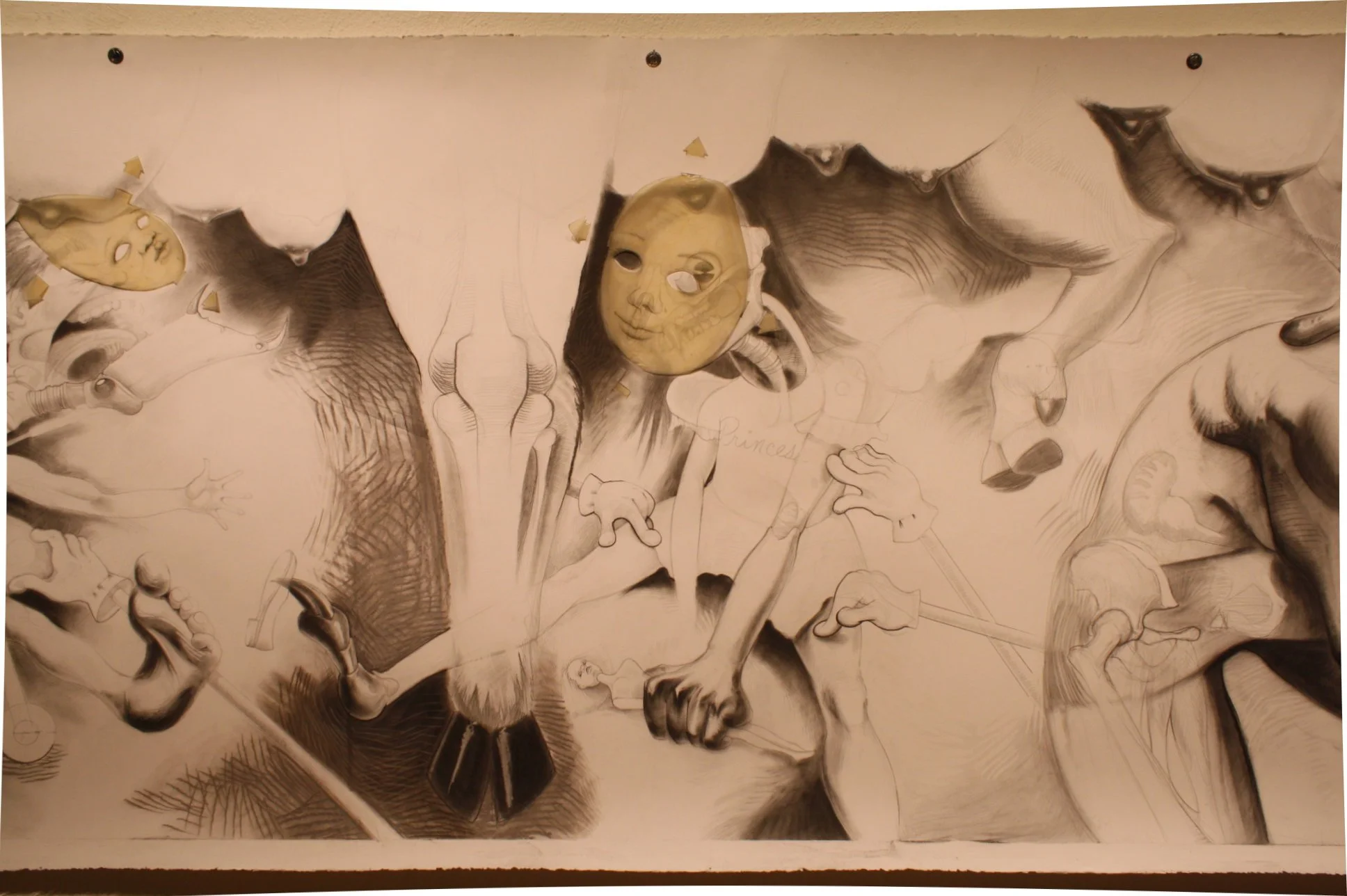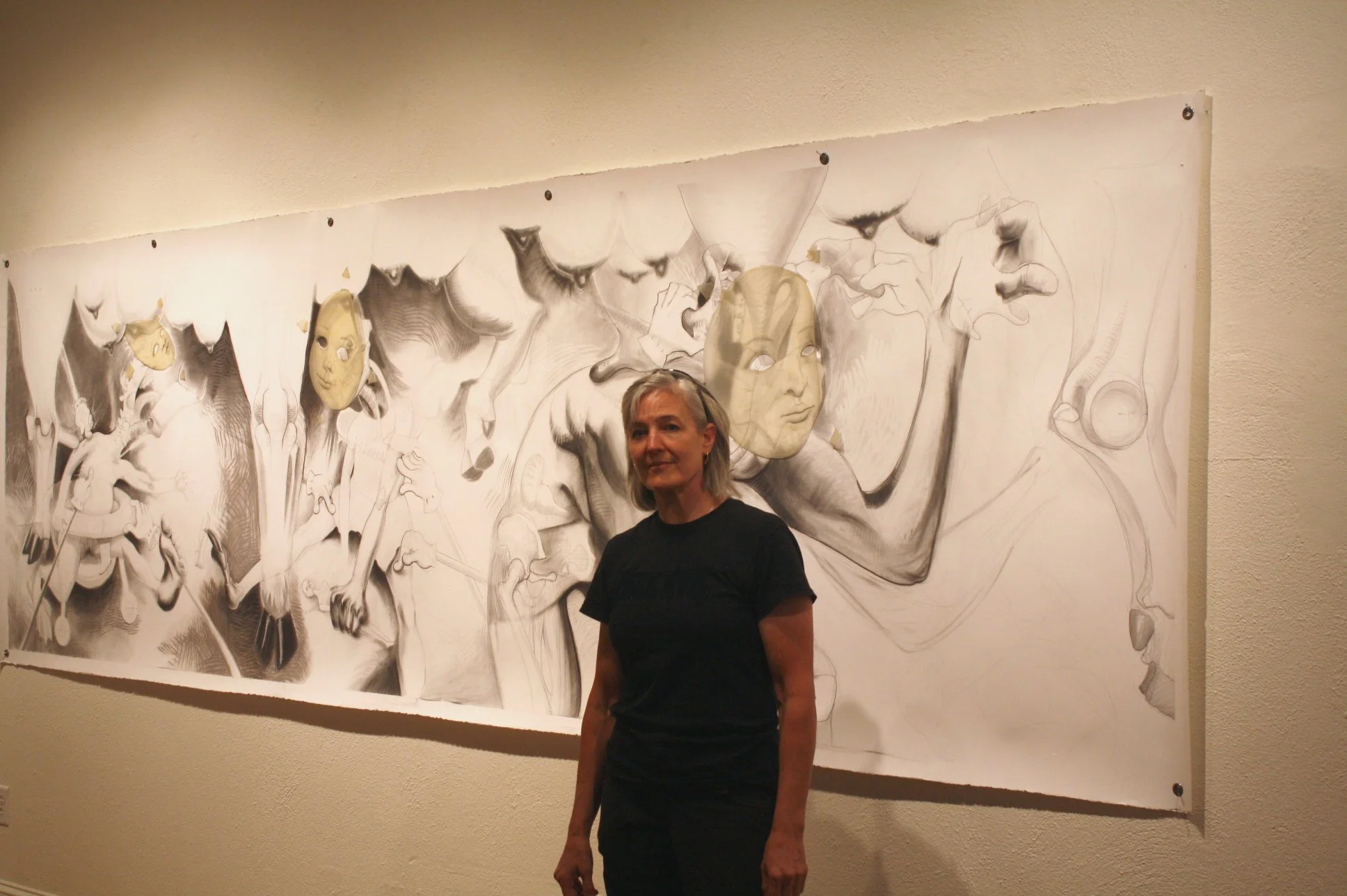In the summer of 2009, I was in my third year of my grad studies at MICA and completed two large drawings. After briefly displaying them in a group MFA show, and acquiring no clue of the significance or meaning of the works, I rolled them up and put them in my attic.
More than a decade later, I pulled this one out for a show at a local live theater space and again at York College’s Marketview Arts Gallery space in downtown York, PA, shortly thereafter. Having had the span of a 13 year hiatus gave me the critical distance to finally understand a piece which has real importance to me as an artist and is significant to my life as a human.
Growing up, I chafed against a persistent lack of bodily and personal autonomy. I escaped into science fiction and sought out a ton of information on world cultures and began to understand that my own little corner of the world was bound by the strictures of a theology. So when I was old enough to cast it off, I did. Later in my college years, I began to understand the construction of gender as yet another straitjacket to wriggle out of.
It wasn’t until this year I began to piece together a theory of how all of these layers of control are interconnected and woven together, and exert pressures on an individual’s psyche. The obvious goal of this control is to curtail physical movement, physical behaviors, bodily existence. And while the males of our species are indeed affected by these layers of control, the female of the species is doubly constricted, her body being the site of reproduction, access to sex, continuation of the species. Society wants to control the means of production so it needs to control her.
Pressures, center detail.
An added layer, one that few see or recognize, is the family container in which we’re born. This year, I’ve been learning about the effects of growing up in an environment of codependent thinking, people-pleasing, and perfectionism. Most of us are in this container. It’s super common. When a child is born, it adapt to the needs and quirks of its parents— because to please the adults guarantees (most often) safety, security, and a full belly, warmth, and hopefully love. It’s all about our nervous system making our inner childrens feel safe. Unfortunately, people-pleasing, or “being perfect”, or stuffing down one’s emotions to avoid confrontation as a kid, leads to maladaptive behaviors as an adult. It keeps us emotionally immature and unable to manage our minds. We believe as kids that all the adults behave like our parents do, that the world (dys)functions in just this way. Feminist writers on the subject called it the “tyranny of the family.”
And so, we’re passive-aggressive to get our way and expect other people to read our minds. We try to fix all the wounded birds. We flatter people. We chameleon ourselves to be whatever version others want to be but what we ourselves need. We constantly beat ourselves up when we’re not “pefect”. And so on. We outsource our own validation and abandon our authentic selves.
Fortunately, these are patterns we can change. We can learn to see this layer of control for what it is: Patterns that we’d developed to survive. Patterns that we were forced into. Patterns taken on as codified beliefs and ossified behavior.
Showing work to scale. Kest in the Marketview Gallery of Art, York, PA.
I now understand my own work here in this context. Our little feral children are poked and prodded with Disneyfied ideas, the masks ill-fitting. As we become tamed, we acclimate, begin to wear the gloves, swallow the pablum. By the end of the cycle, we are beating ourselves up, fully assimilated and ready to indoctrinate the next generation.
Shall we tear off the masks and undo the damage? Something that helped me tremendously to get at the core of this is Victoria Albina’s podcast, "Feminist Wellness". It’s helped me to reconnect with my somatic experience and the emotions that have been dormant there.
She says at the end of each episode: “You are safe. You are held. You are loved. And when one of us heals, we help heal the world.”
Be well, my darling.


